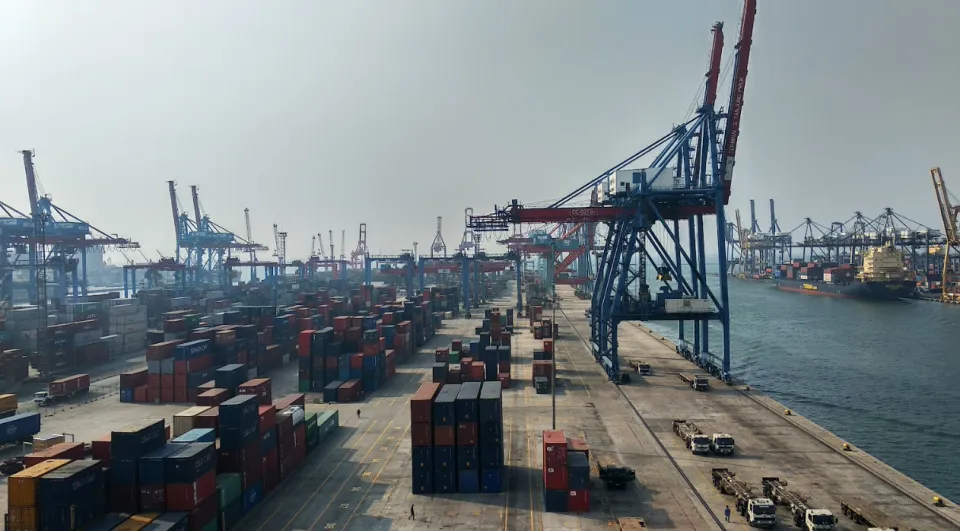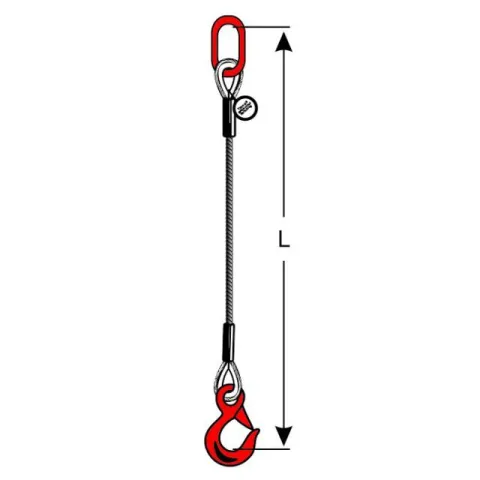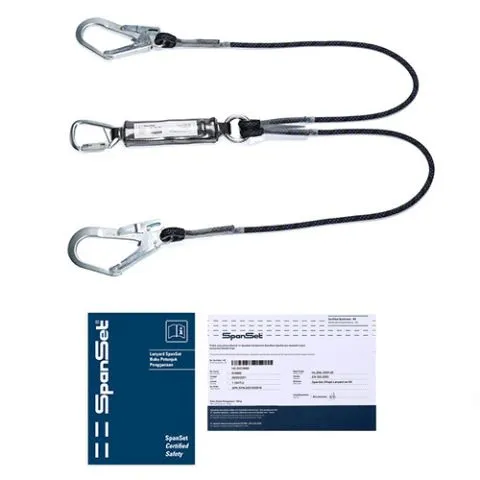Types and Sizes of Wire Slings According to Industry Needs
A wire sling is a lifting and pulling tool used in various industrial sectors. Choosing the right type and size is crucial to ensure smooth operations and workplace safety.
What Is a Wire Sling and Its Industrial Advantages?
A wire sling is a key component in lifting and rigging industries, made from wire rope in various configurations for lifting, pulling, or securing loads.
Wire slings are widely used in construction, mining, oil and gas, and heavy transportation industries due to their strength, durability, and flexibility in handling different types of loads.
Main Components of a Wire Sling
Wire slings typically consist of the following key components:
- Wire Rope: The core of the sling that determines load capacity and flexibility.
- Thimble: A ring-shaped component that protects the wire rope’s loop from abrasion.
- Ferrule or Sleeve: A crimped fitting that secures the rope ends to prevent fraying or loosening.
- Hook or Shackle: Attachments used as connection points to loads or lifting equipment.
Benefits of Using Wire Slings
Wire slings offer multiple advantages that make them the preferred choice for industrial lifting and rigging. Here are the main benefits:
1. High Load Capacity
Designed to handle heavy loads with high safety margins. With the right configuration and diameter, wire slings can lift massive loads without deformation or breakage.
2. Resistance to Extreme Conditions
Compared to synthetic slings, wire slings are more resistant to high temperatures, friction, chemical exposure, and other harsh environments, making them ideal for tough working conditions.
3. Versatile Applications
Wire slings are suitable for a wide range of lifting operations, from single-point lifts to multi-leg configurations for better load distribution.
4. Long Service Life
With proper care and inspection, wire slings last longer than other types. High-durability materials such as galvanized or stainless steel increase resistance to corrosion and wear.
5. Operational Safety and Efficiency
Wire slings are built to meet industrial safety standards like ASME and OSHA, ensuring reliability in every operation. Proper sling usage reduces workplace accidents, boosts efficiency, and maximizes field productivity.
Types of Wire Slings by Material and Application
Wire slings are lifting devices made from braided or stranded steel wires, designed for lifting and moving heavy loads across various industries.
Selecting the correct type of wire sling is vital to ensure safe and efficient lifting operations. Each material type used in wire sling construction has unique characteristics and applications that industry practitioners should understand.
Important Note: Sling selection must consider factors such as Safe Working Load (SWL), operating environment, usage frequency, temperature range, and load characteristics.
Wire Rope for Heavy-Duty Applications
High-carbon steel wire ropes are often used in heavy-duty tasks such as construction and marine industries. They offer excellent tensile strength and shock load resistance.
Main Characteristics:
- High tensile strength: 1770–1960 N/mm²
- Resistant to abrasion and wear
- Good handling flexibility
- Available in various constructions (6x19, 6x36, 8x19, etc.)
- Diameter range: 6 mm to 64 mm
Common Applications:
- Construction site lifting
- Mining and quarry operations
- Heavy equipment and industrial machinery
- Shipyard lifting operations
- Logging and forestry operations
Advantages:
- Relatively economical
- Very high strength
- Widely available
- Can withstand shock loads
Limitations:
- Prone to corrosion
- Requires regular lubrication
- Not suitable for corrosive environments
Galvanized Wire Rope for Corrosive Environments
Galvanized wire rope has a protective zinc coating that provides superior corrosion resistance, ideal for maritime and weather-exposed industrial use.
The galvanizing process involves coating steel wire with zinc for cathodic protection.
Main Characteristics:
- Zinc coating for corrosion protection
- Moisture and water resistant
- Extended lifespan in harsh environments
- Available in standard and heavy-duty grades
- Slightly lower tensile strength than non-galvanized wire
Common Applications:
- Offshore and marine operations
- Fishing and shipping industries
- Outdoor weather-exposed applications
- Bridge construction and near-water structures
- Oil and gas drilling installations
Advantages:
- 5–10x longer corrosion resistance
- Reduced replacement frequency
- Low maintenance in wet environments
- Cleaner visual appearance
Limitations:
- More expensive than non-galvanized rope
- Zinc coating wears over time
- Not suitable for acidic environments
Stainless Steel Wire Rope for Specialized Use
Stainless steel wire rope offers excellent corrosion and chemical resistance, commonly used in food, pharmaceutical, or high-corrosion environments.
It combines mechanical strength, superior corrosion resistance, and a clean aesthetic.
Main Characteristics:
- Made from stainless steel alloys (SS304, SS316)
- Superior resistance to corrosion and chemicals
- Smooth and hygienic surface
- Withstands extreme temperatures (-200°C to 800°C)
- Visually aesthetic and elegant
Common Applications:
- Food and beverage processing industries
- Pharmaceutical and biotech facilities
- Laboratories and research facilities
- Chemically exposed environments
- Architectural and decorative applications
- Marine and underwater structures
Advantages:
- Exceptional corrosion resistance
- Hygienic and easy to clean
- Withstands extreme temperatures
- Premium visual appearance
- Very long lifespan
Limitations:
- Much higher cost
- Less readily available
- Lower tensile strength than high-carbon steel


